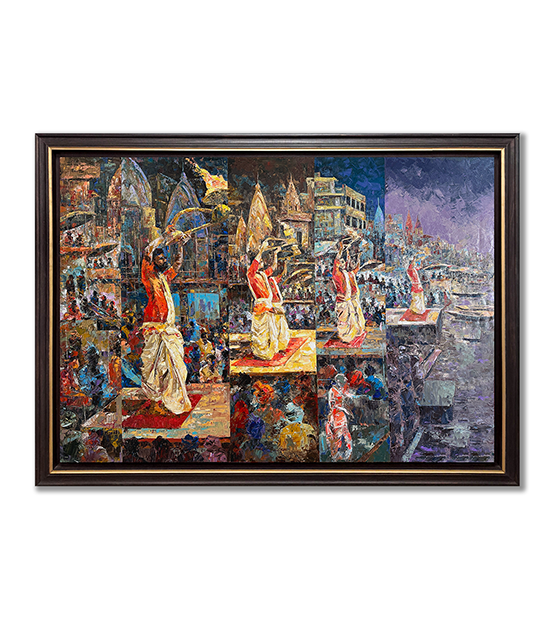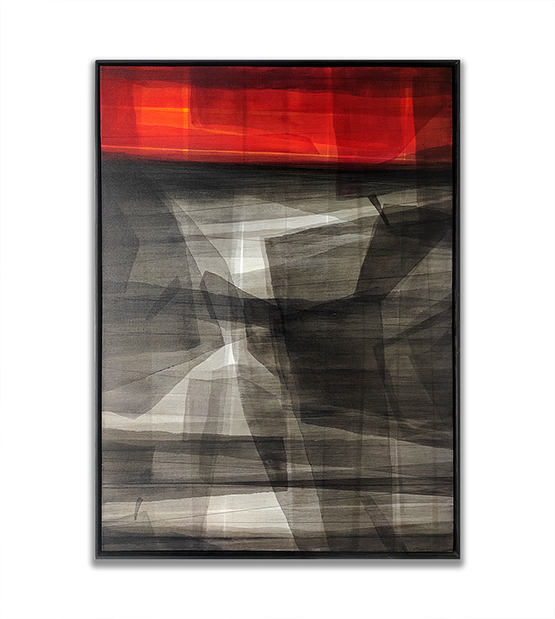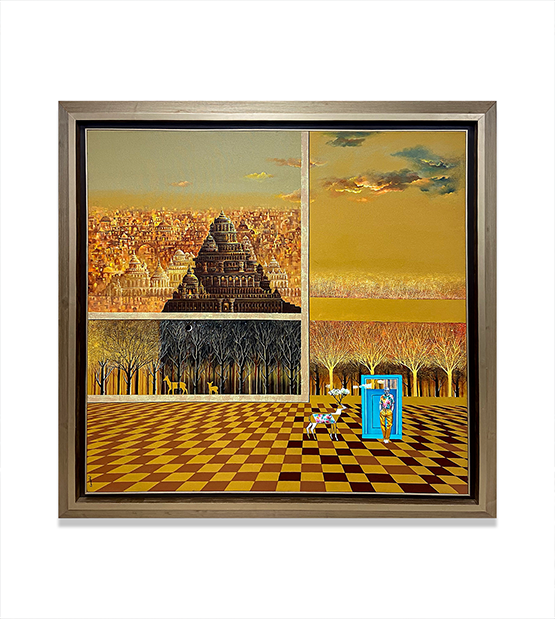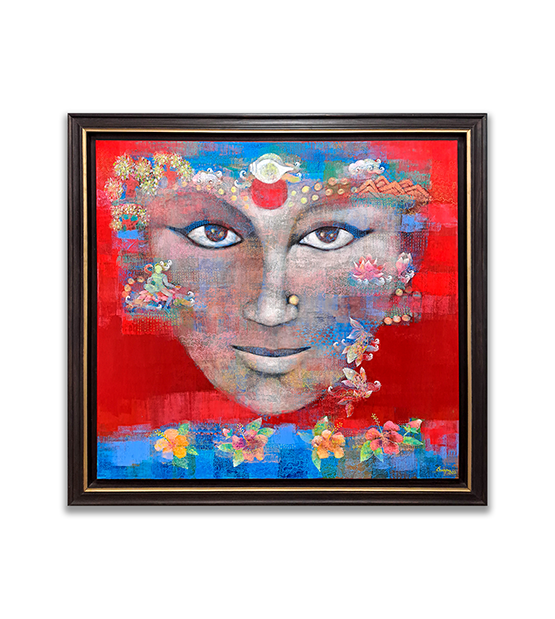The artwork draws inspiration from Satyajit Ray’s portrayal of women in his films “Devi” and “Charulata”, reflecting his keen insight into the intersection of societal roles and the constraints placed on women in society.
In Devi, Doya’s role (enacted by Sharmila Tagore) as the submissive, introverted woman is explored in the context of her familial and religious life. Her transformation into an object of veneration by her father-in-law, who believes she is the incarnation of the goddess Kali, is symbolic of the way women’s identities can be subsumed by societal and patriarchal expectations.
In contrast, Charulata focuses on the quiet, often invisible struggles that women face when they try to carve out their own identities. Charulata’s defiance is subtle, not overt, and the film explores the tension between personal desires and societal expectations. Both films, while set in rural or semi-rural Bengal, depict women whose lives are shaped by the broader social order. Devi discusses victimization by family and society and serves as a critique of religious fanaticism and patriarchy. Meanwhile, Charulata is a more intimate portrayal of a woman’s quiet struggle within the constraints of her marriage and society.
Shampa evokes a sense of stillness that mirrors these themes, creating fluid and amorphous narratives that span the past, present, and future. Just as Ray’s characters are shaped by social forces, Shampa’s canvases reveal the interaction between human, animal, and natural elements, transcending temporal boundaries. Each work becomes a metaphysical space where diverse creations unfold, resonate, and dissolve.
LAYOUT |
Horizontal |
MEDIUM |
Acrylic on Canvas |
SIZE |
36x48 Inches |
STYLE |
Contemporary |
Similar Products

Sanjay Chakraborty
Acrylic on Canvas
50x72 Inches

Mukhtar Kazi
Acrylic on Canvas
48x36 Inches

Kumar Vikas Saxena
Acrylic on Canvas
48x48 Inches

Shampa Sircar Das
Acrylic on Canvas
48x48 Inches